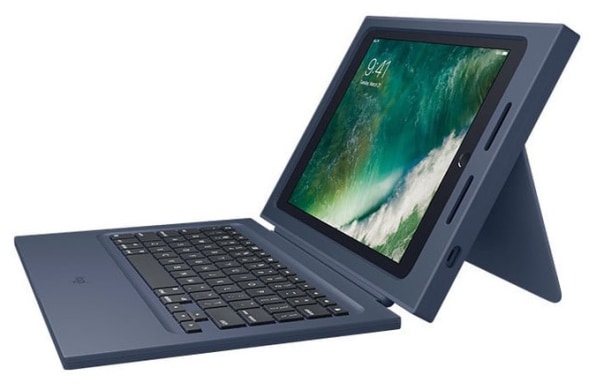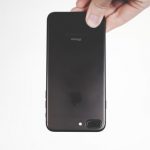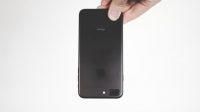Apple’s Bid To Reclaim The Classroom From Chromebooks May Be Too Late
Apple has traditionally had strong bonds with the education market. It’s also offered healthy discounts on computers to all kinds of schools. As with many of the company’s policies, these moves have had a look of goodwill about them, but also neatly aligned with a shrewd marketing objective: hook young people into the Apple mindset when they’re young so that they’ll buy Apple stuff (at full price!) in the future.
Recently, however, the company has been so focused on selling phones and searching for the “next big thing” that it has taken its eye off traditional focus areas. Education might be one of them.
As the New York Times reported earlier this month, Google has begun eating Apple’s (school) lunch with its stripped-down, inexpensive Chromebooks, which have an average selling price of $300. By contrast, the average price of an iPad is about $425.
Unit-wise, Chromebooks dominate K-12 sales. Futuresource Consulting says U.S. primary and secondary schools bought 12.6 million devices last year, including 7.3 million Chromebooks, 2.8 million Windows laptops and tablets, and 2.4 million iPads and Mac laptops.
It wasn’t so long ago that Apple was the clear leader in education, especially as mobile devices became more popular in the classroom. In 2012, according to Futuresource, the company had 52% of the K-12 market, compared to less than 1% for Chromebooks. In the third calendar quarter of 2013, reported Mashable, Apple made more than $1 billion in sales to education that quarter, a new record. Most of that figure was from iPads. CEO Tim Cook didn’t sound worried by Google at the time: “We see Chromebooks in some places, but the vast majority of people are buying PC/Mac or an iPad,” he said.

The rise of the Chromebook in education isn’t a disaster for Apple’s bottom line, which has been fattened up by iPhone sales in recent years (78 million of them shipped in the last quarter alone). But the company may be losing young hearts and minds, and that could really hurt later on. And though it’s recently taken a number of steps to make iPads more appealing to educators, it’s only done so after the Chromebook became a classroom staple.
School administrators, and the consultants who help them buy computers, have been increasingly shifting to Chromebooks because they’ve been far less expensive than iPads. “In this day and age of massive budget cuts in education, price points of devices have become more important than the identifying the best device for student-centered learning within school districts,” says education consultant Lucy Gray, who helps schools procure learning technology.
Chromebooks also have physical keyboards, which is seen as a real-world usability advantage by educators and regulators. In fact, standardized testing rules in some states require that students use a computer with a display, mouse (or touchpad), and a physical keyboard.
Catering To Classrooms
With all this in mind, Apple’s March 21 iPad announcements add up to a move to bolster the iPad’s prospects in education. It announced a low-priced 9.7-inch iPad, an inexpensive keyboard snap-on keyboard from Logitech, and some cool new software enhancements for educators.
The new 9.7-inch iPad will sell to schools for $299, bringing it into rough alignment with the Chromebook. Schools can buy the new iPads in 10-packs at $2,940 for the 32 GB Wi-Fi model, and $3,940 for 10 of the 128 GB Wi-Fi model. Shipping is free to educational institutions, an Apple sales rep told me.

For schools that require a physical keyboard, Apple now has an answer, via a collaboration with Logitech. From Logitech’s release earlier this week: “We worked with Apple to design the Rugged Combo to be incredibly durable and protect iPad while bringing a secure keyboard connection that’s approved for testing, so teachers and students can focus on expanding what’s possible inside the classroom and beyond.” Logitech’s case includes a rugged keyboard attached to a hard cover that protects the iPad against drops.
Educational administrators like Chromebooks for another reason: their manageability. Everything is stored in the cloud, so any student can use any of a school’s Chromebooks to access educational content and other apps.
Apple has been working to make it simpler to manage a fleet of iPads, via its Classroom app for schools. With a classroom full of iPad-using kids, a teacher can open lessons on all the iPads in the room at once, then project one student’s work up onto a monitor in front of the room. It’s now easier to let students share devices, and to move content directly from one iPad to another in the classroom. But even with Classroom, iPads aren’t front ends to a cloud-based experience—something Google’s Chrome OS was designed to enable from the start.
Work To Do
Ultimately, many people involved in education, including Gray, believe Apple has a unique understanding of the teaching process, and the vision to enhance it with new tech tools. “If you are looking to really change the teaching and learning experience for teachers and students, then investigate iPads,” Gray says she advises school administrators. “iPads allow for more flexibility, creativity, and personalization than any other device on the market.”

The problem is, this vision might have been trumped for too long by the premium pricing Apple has placed on devices like the iPad. Another vision may have taken its place–Google’s.
“Curriculum is being structured around Chromebooks—the idea of utilizing 1:1 cloud-based computers in the classroom,” points out Above Avalon analyst Neil Cybart. “While Chromebooks are cheap, school districts are discovering ways of using them in the classroom.”
With the new $299 iPads, Apple has finally removed price as the main barrier to schools buying the devices. As analyst Cybart says, it’s pretty obvious the company doesn’t want to cede the classroom to “cheap laptops.” But there’s real reason for skepticism about Apple’s chances. The Chromebook is not only attractively priced, but also well suited to schools–and, now, entrenched.
If Apple really wants to reclaim the education market, it may have to do still more. Depending on adoption levels of the new 9.7-inch iPad over the next year, the company may have to be ready to offer deeper discounts for educators. On the software side, it may have to look at adopting a more cloud-centric approach to device management, security, and content sharing.
Another thing that might help: spending more time with the educators and administrators who have long been advocates for Apple products, whether at conferences or in classrooms. There are signs that the company understands this. “Apple needs to beef up their marketing efforts and get in front of teachers more often,” says Gray. “Many years ago, they stopped having a presence at education trade shows. And they seem to be making more of an effort in this area recently.”
Fast Company , Read Full Story
(54)







